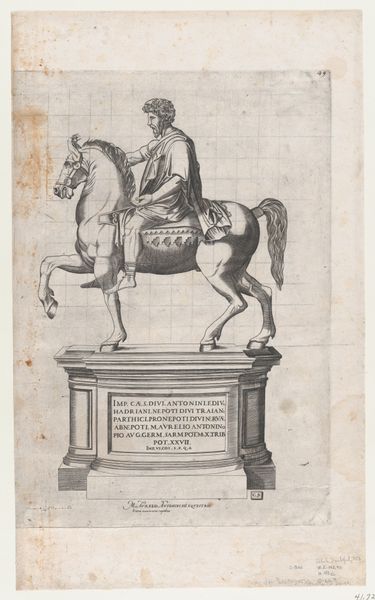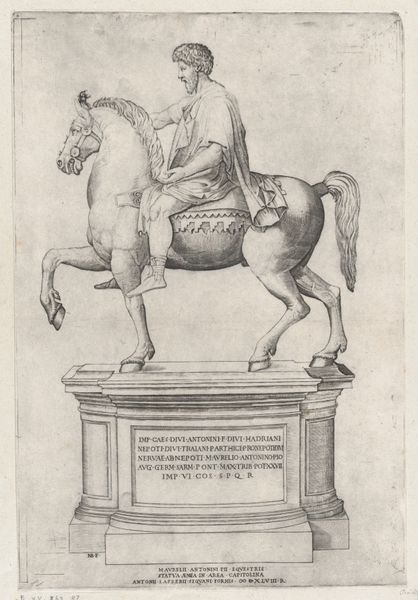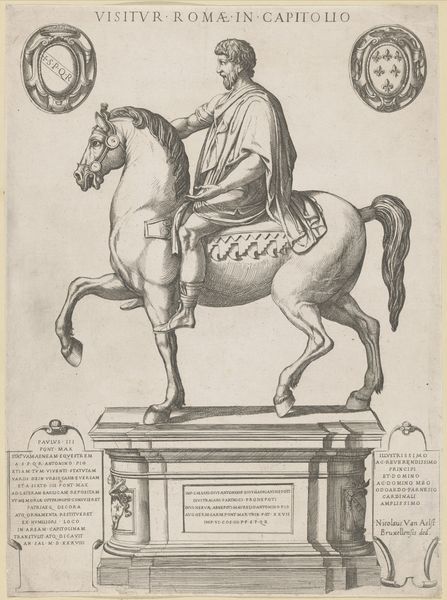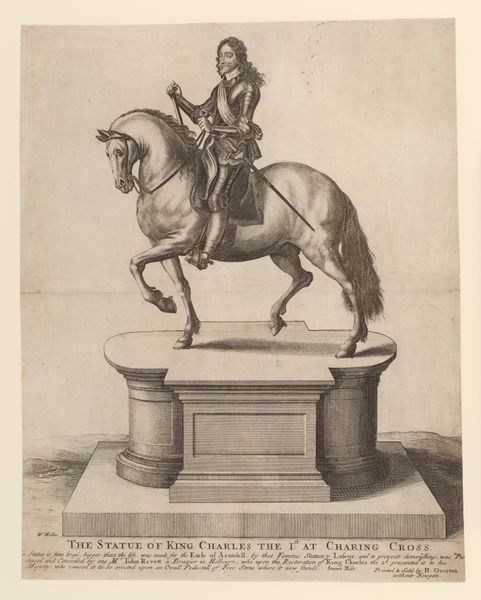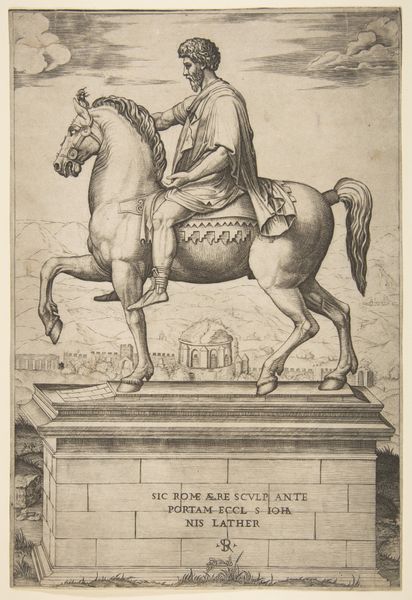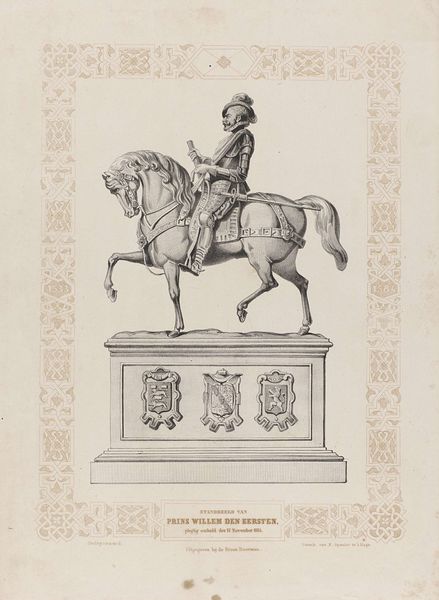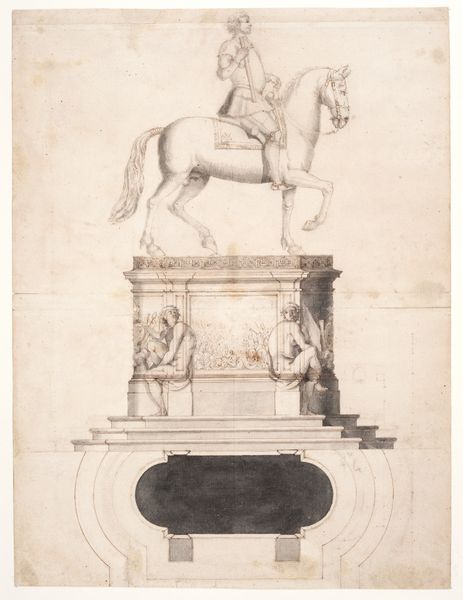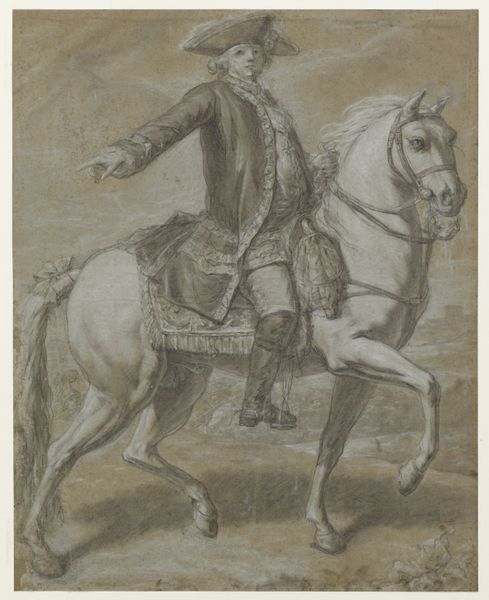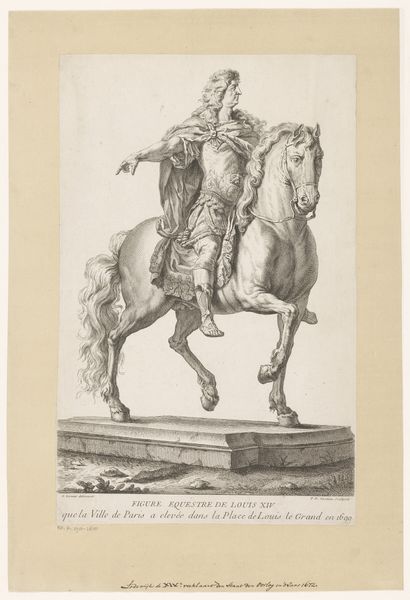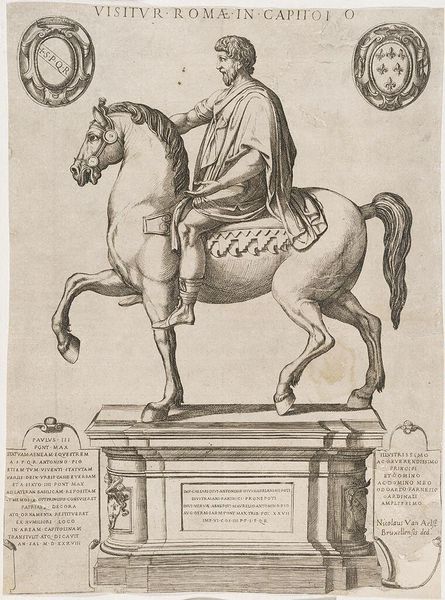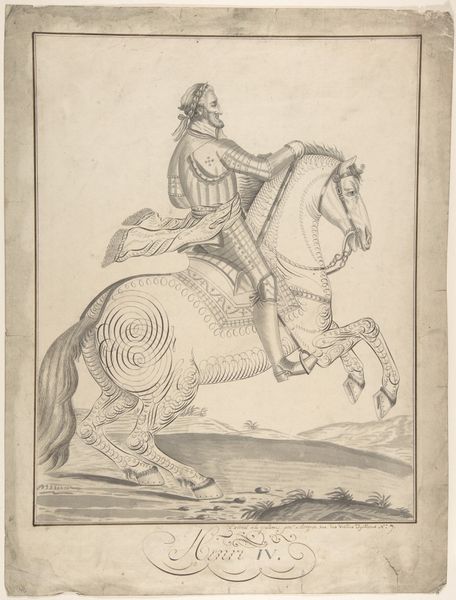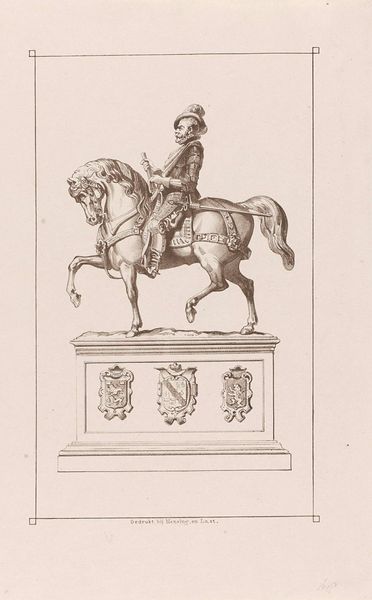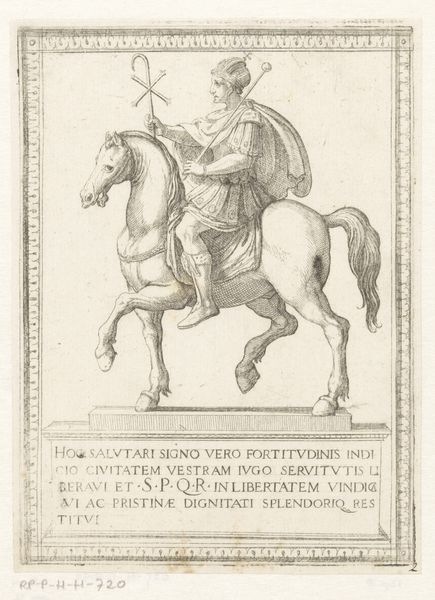
Ruiterstandbeeld van Cosimo I de' Medici, groothertog van Toscane 1755 - 1805
0:00
0:00
drawing, print, bronze, sculpture, pencil, engraving
#
portrait
#
drawing
# print
#
bronze
#
11_renaissance
#
sculpture
#
pencil
#
engraving
#
erotic-art
Dimensions: height 482 mm, width 284 mm
Copyright: Rijks Museum: Open Domain
Curator: There’s an undeniable stoicism captured in this print. It depicts the equestrian statue of Cosimo I de’ Medici, Grand Duke of Tuscany. It was realized, or at least documented, by Gaetano Vascellini, sometime between 1755 and 1805, utilizing engraving and pencil. Editor: My initial reaction is its stiffness. The print work is precise, almost clinical. It’s a far cry from the raw dynamism I’d expect from a leader on horseback. There’s a certain coldness in the presentation. Curator: Cold, maybe, but the material reality counters that, right? It's bronze, a robust metal. These sculptures were intentionally situated in public squares for everyday people, and designed to last as signifiers of power through weather and conflict, or through shifting socio-political tides. Editor: Precisely. We’re seeing Cosimo de’ Medici through a very specific lens – a calculated performance of authority, designed to resonate within the political and social structures of the time. The sword at his side is as much a part of that calculation as his cloak. We’re talking about power structures being actively solidified, even eroticized in this piece through Cosimo’s own pose. The artist, Vascellini, reinforces the status quo by choosing to represent it so faithfully. Curator: And, of course, the process of creating a print like this demands a division of labor, where the skill of the engraver is crucial. Think of the manual labor, the skill needed to accurately portray bronze in ink, playing with the highlights. Editor: Consider, also, who consumed these images and how these materials and representations perpetuated dynastic legacy and its influence for future generations, effectively creating the spectacle of governance we see playing out today. This is less a portrait of a man and more the industrial production of political persona. Curator: I’m struck by how the means of production influences perception, from the choice of materials to distribution, each contributing to the statue’s, and thus Cosimo’s legacy. Editor: Agreed. Examining how images of power are made, distributed, and received illuminates much about our ongoing relationships with those in power. Curator: It has truly been a fascinating look into process, materiality, and the enduring significance of that bronze beneath it all. Editor: And by exploring that, hopefully we’ve added a critical layer to understanding how powerful legacies are intentionally shaped through visual representation.
Comments
No comments
Be the first to comment and join the conversation on the ultimate creative platform.
